![]()
![]()
![]()
Use LEFT and RIGHT arrow keys to navigate between flashcards;
Use UP and DOWN arrow keys to flip the card;
H to show hint;
A reads text to speech;
15 Cards in this Set
- Front
- Back
- 3rd side (hint)
|
What was the largest leper hospital? |
•Burton Lazar, founded in the 12th century as a HQ for assets dedicated to leper’s. •Today it is a series of earthworks. Artefacts: Melton Mowbray Leper Head and bronze seal. |
BL, HQ for assets, MM head and B seal. |
|
|
What defines the ‘edgelands’? |
Liminality (threshold) - hospitals, hermitages and friaries: a strong religious presence. I.e. 5 leper’s hospitals on the outskirts of Norridge by entrances. |
Activity and charity |
|
|
What about prostitution? |
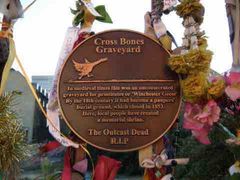
•Crossbones Graveyard Southwark - An unconsecrated ground for paupers and prostitutes. 148 bodies removed, many children. •Street names I.e. Gropecunt Lane •On the South Bank of the Thames - ‘liberty’, bishops lived here, controlling prostitutes who were called ‘Winchester Geese’ •In 1355 were required to wear striped hoods due to Sumptuary Law |
Winchester geese, Outcasts, South Bank of Thames, striped hoods, Grope, Crossbones. |
|
|
What is the material culture for leper’s? |

•Beaver hat, beg bowl, bright red/green. •Bell/rattle I.e. Wooden rattle from St. Nicholas hospital c.1600. •Recorded in manuscripts I.e. British Library depiction of clothing. •Originates from an Agen relief on the story of Lazarus and Dives who goes to purgatory, all leper’s called ‘lazars’. |
Clothing, rattle, agen relief |
|
|
Where did leprosy come from? |
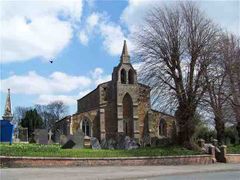
• Aelfweard of London 1044, forced to resign and brought attention to it in the Rule of St. Benedict, resulting in leper hospitals I.e. Burton Lazar the largest leper hospital. •A spread due to expansion of Eastern trade routes. •Archaeologically leper’s were more likely to succumb to the Black Death due to compromised immunity. •Lazarus ‘lazar’ story of going to hell unless you helped leper’s. |
Aelfweard, eastern, Black Death, Lazars. |
|
|
How did leper hospitals run? |
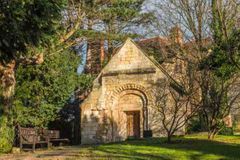
• Advertised as being for health and charity. • Lords and kings donate to get to heaven •300 total, 12-13th c. founding. but location was on the fringe due to Leviticus passage in the Bible which influenced the Lateran Council. They were fully visible I.e. Harbledown, Kent on a large hill. Only chapels survive I.e. Stourbridge and Blandford. |
Advertised purpose, who donated, visible, on fringe, only chapels today. |
|
|
What was the largest leper hospital? |
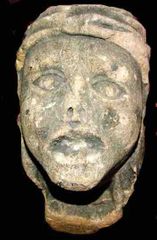
•Burton Lazar, founded in the 12th century as a HQ for assets dedicated to leper’s. •Today it is a series of earthworks. Artefacts: Melton Mowbray Leper Head and bronze seal. |
BL, HQ for assets, MM head and B seal. |
|
|
Case Study: St. Mary Magdalen leper hospital |
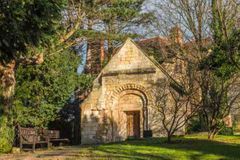
• Cemetery at St. Mary Magdalene has 85% leper burials, a stone tower and at least one pre-conquest leper burial from 14C dating. •There were other patients with TB and malnutrition so possibly were misdiagnosed. |
85%, misdiagnosed, 14C pre-conquest |
|
|
Why were the Jews persecuted? |
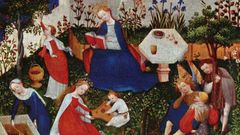
•There was an association between Jewish and money-lending. •They settled in 1066, 1194 had archa (chests) in 27 Jewish centres, 1210 cripplingly taxed in Bristol, 1275 forbidden to charge interest (by the Statum de Judeismo) and exiled in 1290 by Edward I. |
Money, timeline 1066 1194 1210 1275 1290 |
|
|
What is the evidence of Jewish existence/persecution? |
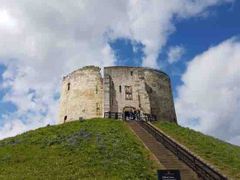
• Clifford Tower - mass suicide/murder of 100-150 Jews. •Guildford Medieval Synagogue 1180 painted walls. •Bet Tohorah dead washplace 2.5m below surface with Hebrew for ‘flowing’ on the wall. •Colchester Hoard - 14000 pennies, last coin dated to 1278. •Bodleian Bowl - A bronze bowl used by Jewish people for bathing/taking lots? •Jew’s House Lincoln - One of the earliest townhouses in England from 1180 with Romanesque windows. It was lived in by a jewess. Lincoln has a large concentration. Northampton grave 13th c. - the only grave ever found. Jewbury, York - The only Jewish cemetery to be somewhat excavated. |
Clifford, synagogue, Tohorah, Colchester, Bodleian, Lincoln, Northampton, Jewbury. |
|
|
What were the ranks of peasant and types of house they owned? |
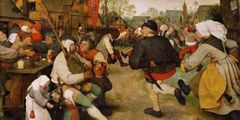
•Slaves •Cottars/Bordards (owned) peasant cots •Villeins (worked for plot) longhouses •Freemen/Yeomen (owned plot) the farm. |
3 types apart from slaves. |
|
|
Where is the evidence of peasant living? |
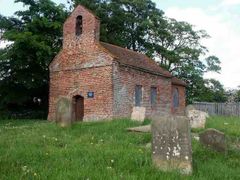
There are 3000 deserted medieval villages I.e. Cowlam Farm Poor evidence in houses due to sweeping and artefacts/pottery are found in fields due to manuring. Goltho, Lincolnshire - only a chapel survives, 3 cots excavated. Wharram Percy - sophisticated Crux frames, planned, used to believe peasants had bad technology as they transported their Crux. Peasants had a market economy, but changing use of space I.e. longhouses to farmhouses mean there’s poor prior evidence. |
3000 Deserted, manuring Goltho, Wharram P |
|
|
What is the evidence of the Peasant Revolt In 1381, and also their general identity? |
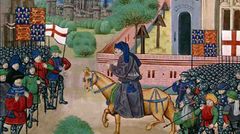
•Illegal hand querns I.e. Somerset, arrowheads and deer bones from Wharram Percy. •Ecclesiastical sites are attacked I.e. St. John’s Abbey and Lambeth Palace (documents destroyed). •Wharram Percy robbery in Area 10 manor pit when it was abandoned, and the vicar excluded villagers ancestor burials from the church pale creating resentment. |
Illegal objects, ecclesiastical, wharram Percy |
|
|
What sort of system was society based on which may have contributed to the revolt? |
A feudal system, where the majority of peasants were working for their lord. However the influential merchant class (kulaks in the 14th c.) created prosperity, changing the social structure. |
Feudal, prosperity |
|
|
What issues are there with recording peasant life? |
1. There is poor evidence of houses I.e. manuring/sweeping. 2. There are issues of interpretation and material culture is dismissed I.e. Wharram Percy houses misinterprtated. 3. It takes too long to publish finds I.e. WP was excavated in the 50s and is still being published. |
Poor evidence, interpretation issues, publishing time |

